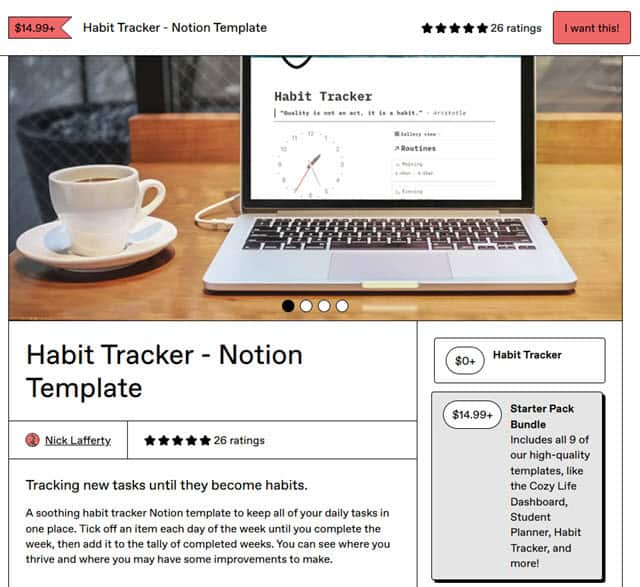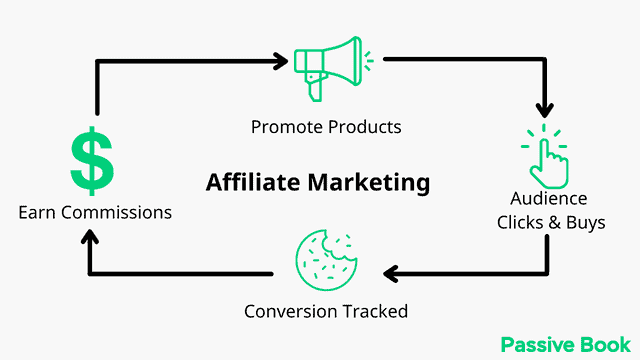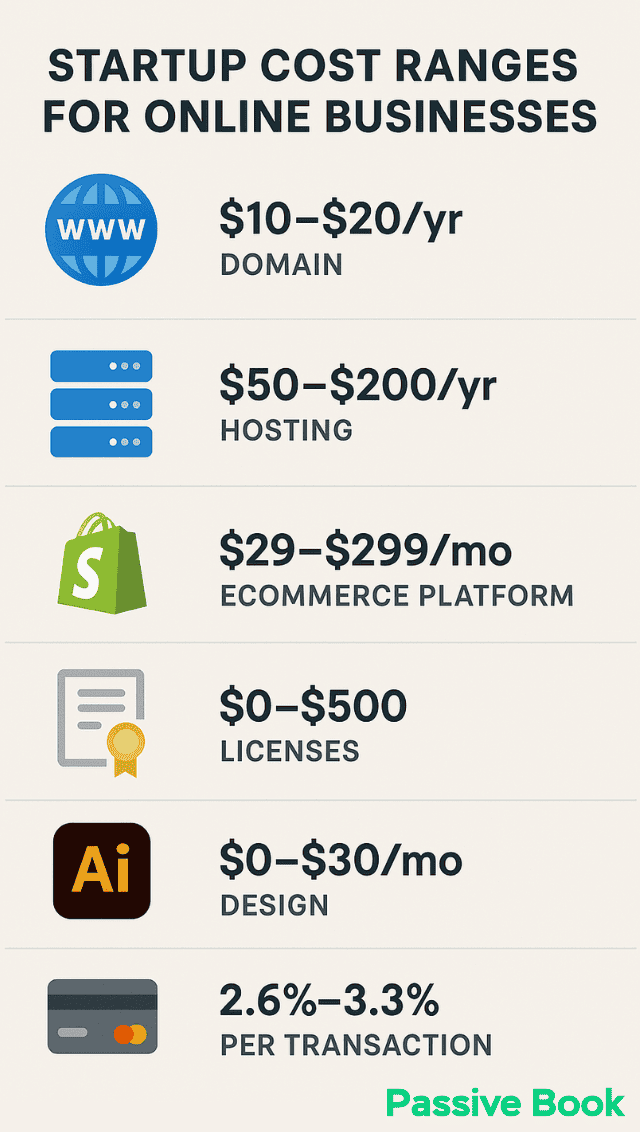I spent six months building an elaborate membership site while working my corporate job. The content was solid. The platform worked. But I hadn’t considered one critical factor: I needed to create fresh content every single week to justify the monthly fee.
By month three, I was burning out trying to film videos at midnight after my day job. The model was killing me before it could sustain me.
That painful lesson taught me what most solopreneurs learn the hard way. Your revenue model isn’t just about how you make money. It’s about whether you can actually maintain that income stream with the time and resources you have.
This guide will show you how to choose a revenue model that fits your life, not one that demands you reshape your entire existence around it.

What Is a Revenue Model?
A revenue model is the framework that defines how your business generates revenue from customers. It’s the primary revenue source that determines your business growth path and long-term customer relationships.
This differs from your business model, which describes what you do and how you deliver value. Your revenue model focuses specifically on the monetization mechanism. Think of it as the engine that powers your financial sustainability.
Here’s what nobody tells you about revenue models: most entrepreneurs choose them backwards. They see a successful business using subscriptions or freemium, copy the model, then wonder why it’s not working. The model isn’t the secret sauce. The alignment between model and reality is.
Getting this wrong is expensive. 33.7 million small businesses operate in the U.S., and those that survive rely on revenue models aligned with their market reality and operational capacity.
Why Revenue Model Choice Matters
Here’s the brutal reality: 80% of startups fail, and flawed revenue models that don’t meet market needs are a primary culprit.
But for part time entrepreneurs, there’s an additional layer of vulnerability.
The wrong revenue model creates time demands that don’t work with a full-time job. A subscription model requiring weekly content creation sounds appealing until you realize you’re committing to 52 content pieces per year while working 40 hours elsewhere.
A service-based model might generate quick revenue, but client calls during your 9-to-5 create impossible conflicts.
Revenue predictability matters differently when you’re bootstrapping. You need to know whether your part-time business can generate consistent income before you can confidently reduce hours at your day job or make the leap entirely.
Models with long ramp-up periods or unpredictable income spikes create financial anxiety that undermines the whole venture.
The most dangerous mistake? Choosing a revenue model because it worked for someone else without evaluating whether their time availability, skills, and budget match yours. Your model must fit your constraints, not an idealized version of your life.
6 Best Revenue Models
Some revenue models don’t work for time-constrained solopreneurs. Choosing the right revenue model means understanding how each model works for your customer segments and long-term customer value proposition.
These six have proven track records for solopreneurs working around day jobs, each with distinct trade-offs in time investment, startup costs, and revenue timelines.
One-time Sales Model
The one-time sales model means a customer pays once for permanent product service access without recurring fees. You create something valuable, price it appropriately, and collect payment in exchange for lifetime ownership or access.
Morning Brew started as a college side project—proving these models work when you’re time-constrained, not just when you’re aiming for unicorn status. They now sell courses with single payment structures. This model front-loads your creation effort but requires minimal ongoing maintenance after launch.
Digital products provide multiple revenue streams with minimal cost of goods sold. The beauty for weekend entrepreneurs is the ability to build inventory during intense creation sprints, then shift to maintenance mode.
A digital template pack created over eight weekends can sell for years with only occasional updates.

Startup Costs: $100-500 for tools and hosting
Time to First Revenue: 2-4 months
Weekly Time Commitment: 15-20 hours during creation, 2-3 hours after launch
Best for: Digital downloads, templates, print-on-demand, online courses with lifetime access
Subscription Model
The subscription-based revenue model creates recurring revenue streams that compound as you build your customer base. This subscription revenue model requires understanding customer lifetime value and maintaining high conversion rates from free users to paying customers.

Customers pay recurring fees for ongoing access to your product service. This creates the holy grail of business metrics: monthly recurring revenue that compounds as you add customers.
Justin Welsh generates over $5M annually through newsletter and course subscriptions as a solopreneur. The predictable income is ideal for financial planning alongside a day job, letting you project exactly when you can afford to go full-time.
But here’s the catch: commitment. You must deliver consistent value every billing cycle to justify that recurring payment. Newsletter creators need weekly content. Membership sites require regular updates. Community platforms demand active engagement.
Getting started requires $500-1,500 for platform and tools, with 3-6 months before first revenue. Expect to invest 8-12 hours weekly consistently—this isn’t a sprint-and-coast model. It’s best suited for newsletter creators, membership sites, ongoing content platforms, and SaaS tools where recurring value justifies recurring payment.
The psychological shift from chasing one-time sales to nurturing ongoing relationships changes how you approach content. You’re not selling a transaction. You’re proving continuous worth every single month.
Freemium Model
The freemium model offers free access to basic features while charging a higher price for premium capabilities. This revenue model involves converting free users to paying customers through enhanced user experience and data-driven feature decisions.
You build a large free user base, then convert a percentage to paying customers through added value.
HabitKit by Sebastian Roehl is a bootstrapped habit-tracking app that reached $10K in monthly recurring revenue. The solo developer started with a free tier while working full-time, converting users to a $4.99 monthly premium subscription.
Run the math carefully. Typical freemium-to-paid conversion rates are 3-3.7% for SaaS products in 2025. You need significant free user volume to generate meaningful revenue, which means substantial upfront effort to attract that audience.
Even smaller wins matter. Sarah’s Notion template shop generates $800 monthly working 6 hours weekly—enough to cover her grocery bills and validate the model works at any scale.
Startup Costs: $1,000-3,000 for development
Time to First Revenue: 6-12 months
Weekly Time Commitment: 10-15 hours
Best for: Software tools, apps, premium content platforms with large free user bases

Affiliate/commission Model
Pat Flynn’s Smart Passive Income started as a side project while he worked as an architect, eventually generating over $20K monthly. He began with zero budget while employed full-time, requiring only a website and authentic product recommendations.
His success demonstrates the affiliate revenue model in action—promoting other companies’ products and earning 5-75% commission on resulting sales.
As an affiliate marketer might promote physical products through affiliate marketing, you create content that educates or reviews products, insert affiliate links, and collect commission when readers purchase.

The affiliate model scales directly with your content volume. More blog posts, YouTube videos, or podcast episodes mean more opportunities for affiliate conversions.
The minimal $100-300 startup costs for domain and hosting make affiliate marketing the most accessible entry point for bootstrappers. First revenue typically arrives within 2-4 months. Plan for 5-10 hours weekly creating content for YouTube, blogs, or podcasts where you review or recommend products.
Digital Product Model
Digital products are created once and sold repeatedly with zero inventory costs and profit margins above 90%. Templates, ebooks, courses, presets, and downloadable tools all fall into this category.
Teachable creators sell courses with one-time or subscription access models, building assets that generate income long after creation. The create-once-sell-repeatedly nature fits weekend entrepreneurs perfectly because you can build during intense sprints, then harvest sales during maintenance mode.
The initial time investment is substantial. Expect 60-120 hours to create a comprehensive course or template pack. But once launched, you’re selling your time and expertise infinitely without additional production costs.
Budget $200-800 for tools and platforms like Teachable or Gumroad, plus design tools and email marketing software. First revenue takes 3-5 months. During creation, dedicate 15-25 hours weekly, dropping to 3-5 hours for maintenance after launch. Ideal for online course creators, template designers, ebook authors, and preset makers.
Service-based Model
Service businesses exchange your time and expertise directly for payment. You offer consulting, coaching, design, writing, social media management, or other skills to clients who pay hourly, per project, or on retainer.
Service models generate income directly through customer relationships. Unlike subscription-based or one-off digital products, services require ongoing customer insights and responsiveness to customer behavior and customer needs.
Ellen Mackenzie built a six-figure social media management business managing 5-8 client accounts. Service models allow immediate revenue generation within 30-60 days because you’re selling skills you already possess rather than building products first.
Trade-off? It’s obvious: your income is directly tied to hours worked. You can’t scale beyond your available time without hiring, which adds complexity.
But for weekend entrepreneurs needing quick validation or cash flow, services provide the fastest path to revenue.
Startup Costs: $0-500 for basic tools
Time to First Revenue: 1-2 months
Weekly Time Commitment: 10-20 hours delivering services
Best for: Freelancers offering social media management, consulting, design, writing services
Hard Truths Nobody Tells
I launched my first digital course thinking I’d created a passive income machine. The course was solid, the platform worked, and sales trickled in. What I didn’t anticipate was the constant stream of customer service emails, refund requests, and technical support questions.
Three months in, I was spending more time managing customers than creating new products. My “passive” income demanded active daily involvement.
The passive income myth extends beyond customer service. Most digital products require 3-6 months of intensive upfront work before generating first sales. Then comes the waiting game as you build an audience, establish trust, and optimize conversion.
The “create once, sell forever” promise is technically true, but it omits the ongoing marketing, updates, and community management required to maintain sales velocity.
Part time entrepreneurs face operational challenges that full-time entrepreneurs avoid. Customer inquiries arrive during your workday when you can’t respond. Urgent technical issues pop up Tuesday morning when you’re in meetings.
Research shows 47% of solopreneurs report difficulty managing customer inquiries outside dedicated business hours, leading to slower response times and increased refund rates.
The long-term reality is sobering. 40% of solopreneurs successfully maintain a weekend business model long-term, but their path to profitability takes 1.5-2x longer than full-time ventures.
The math is simple: fewer working hours mean slower growth, even with perfect execution.
AI & Automation in 2025
I’ve automated more of my business in the past 18 months than in the previous decade combined. Not because I’m suddenly tech-savvy, but because the tools got stupid simple to use.
Nearly 66% of solopreneurs now use AI for marketing and customer service automation, eliminating barriers that previously required full-time attention or expensive team members.
Weekend content creators use ChatGPT and Claude for blog drafting, email sequences, and social media posts. This saves 5-7 hours weekly that previously went to staring at blank screens.
The AI handles first drafts and outlines, freeing you to add personal insights and expertise during limited weekend hours.
E-commerce solopreneurs implement AI chatbots like Tidio or Intercom for customer service around the clock. These tools cost $10-30 monthly and handle common questions about shipping, returns, and product specifications while you’re at your day job.
The sophisticated bots escalate complex issues to you while handling routine questions automatically. Most users report resolution rates above 60% for common inquiries like shipping, returns, and product specs.
Free and accessible AI tools create competitive advantages that didn’t exist three years ago. Canva‘s AI features generate social media graphics in minutes. Descript transcribes and edits podcast episodes automatically.
These AI tools improve customer acquisition efficiency and conversion rates while providing better user experience. The result is more effective revenue generation from your existing customer base without expanding your supply chain or increasing cost of goods.
The revenue model implication is profound. Tasks that previously demanded 15-20 hours weekly now require 8-10 hours with AI assistance. Subscription models become feasible for solopreneurs who previously couldn’t maintain weekly content schedules.
Digital product creators compress development timelines from 6 months to 3 months by automating research and drafting phases.
3-Question Framework
Effective revenue models align with your customer needs and product service capabilities. The best revenue model isn’t the one generating the highest revenue streams for others, it’s the one matching your customer acquisition costs and conversion rates to your actual constraints.
Q1: Your Available Hours
Be brutally honest about your available time. Data from 2025 solopreneur research shows successful weekend entrepreneurs typically dedicate 10-15 hours across Saturday and Sunday.
Track your actual available hours for two weeks before committing to a model. Most new entrepreneurs underestimate non-productive but necessary business time by 40-50%. You can find out how much time you have by doing a time audit.
Subscription models require 8-10 hours weekly for consistent content creation and community engagement. One-time sales models need 15-20 hours during the build phase, dropping to 3-5 hours weekly after launch for maintenance and marketing.
Content creators building affiliate revenue streams report 12-15 hours weekly including content creation, editing, SEO optimization, and community management. Service-based models vary dramatically depending on client demands, but 10-20 hours weekly is typical for managing 3-5 ongoing client relationships.
Q2: Your Budget Reality
Your startup capital determines which types of revenue models are accessible and sustainable for your business model. Different types of revenue generation require varying cost of goods and profit margins.
84% of solopreneurs start with under $5,000 using personal funds, not investor capital or business loans.
WordPress plus WooCommerce runs $15 for domain through NameCheap, $60-90 annually for hosting through Bluehost, and $0-30 for essential plugins. Total first-year cost around $75-135.
Shopify starts at $29 monthly, or $348 yearly, but print-on-demand integration through Printful or Printify costs $0 upfront since you only pay per sale—making total startup costs around $350 for first year.

Affiliate marketing and content creation models require only domain and hosting costs, typically $100-200 annually. You can start a blog, YouTube channel, or podcast for minimal investment because you’re using free platforms for distribution.
Digital product creation lands in the middle, requiring $200-800 for course platforms like Teachable or Gumroad, design tools like Canva Pro, and email marketing software. Freemium software models demand higher investment, typically $1,000-3,000 for development unless you’re building it yourself.
Q3: Revenue Timeline
Your financial runway determines which models are viable. Some generate quick cash while others require patience and persistence.
Service businesses secure first clients within 30-45 days. You’re selling existing skills to clients who need immediate help. The revenue timeline is fast because you skip the product development phase entirely. But remember: you are still trading your time for money. If you don’t put in the time it means no income, and scaling beyond 20 hours weekly is nearly impossible without hiring.
Digital products average 3-4 months from initial creation to first sales, with a 6-12 month ramp-up period to reach $1,000-2,000 monthly revenue. You need time to build the product, create marketing materials, grow an audience, and establish trust before conversions accelerate.
Subscription models require 4-6 months to build sustainable monthly recurring revenue above $2,000. The compound effect is powerful once established, but early months feel slow as you acquire subscribers one by one while fighting churn.
Affiliate marketing timelines vary wildly based on your existing audience and content production capacity. Established bloggers add affiliate revenue within 60-90 days. Starting from zero requires 4-6 months to build traffic and authority before meaningful commissions arrive.
Common Fatal Mistakes
The most common fatal error is choosing a subscription model without capacity for consistent weekly content creation. You see the appeal of recurring revenue and monthly predictability. But by month three, you’re scrambling to create content at midnight after exhausting workdays.
Subscribers cancel because value delivery becomes inconsistent.
Underpricing to compete sacrifices both sustainability and perceived value proposition. New entrepreneurs often slash prices hoping to undercut competitors and gain market share quickly. This creates unsustainable unit economics where you need 10x the customers to match revenue from appropriate pricing. Worse, low prices signal low value to your target market.
Founder research from 2025 shows founders who fail to set clear revenue targets are 3x more likely to run out of capital. Weekend entrepreneurs especially need concrete goals: How much monthly revenue makes this worthwhile? When does income justify reduced day job hours?
Without targets, you drift without knowing if you’re succeeding or failing.
Analysis reveals 67% of failed weekend businesses attempted multiple revenue streams simultaneously in their first six months. They launched affiliate marketing, sold digital products, offered consulting, and built a membership site at once.
This fragmentation prevents any single stream from reaching viability. Each model requires focused attention to establish traction.
The pattern is predictable. Pick one revenue model. Prove it works. Generate $500-1,000 monthly consistently. Then consider adding a complementary second stream. Sequential beats simultaneous every time for resource-constrained solopreneurs.
When to Pivot
Three months into your chosen model, you should see specific signals that indicate whether you’re on the right track or heading for a wall.
Your time commitment is the first indicator. If you’re consistently exceeding the weekly hours you planned by 50% or more, the model doesn’t fit your constraints.
Revenue trajectory matters more than absolute numbers at this stage. You should see month-over-month growth, even if it’s small. Affiliate revenue going from $47 to $128 to $210 across three months shows traction.
Staying at $40-60 monthly for three consecutive months signals a problem with either your content, audience targeting, or model fit.
Customer acquisition costs compared to lifetime value reveal model viability. If you’re spending $50 in time and ads to acquire a customer who generates $30 in revenue, you’ve got a math problem that won’t fix itself with scale.
The pivot decision comes when you’ve given your model a fair test (90 days minimum) and the data shows misalignment. Don’t pivot because of impatience. Pivot when your constraints have changed, like more time available or bigger budget, or when the model’s demands consistently exceed your capacity despite optimization efforts.
Frequently Asked Questions
These are the three questions that show up in my email every single week. The answers aren’t sexy, but they’re accurate based on a decade of testing these models myself.
Can I Switch Revenue Models After Launching?
Revenue model pivots are common and often strategic for business growth. The key is maintaining your existing revenue stream while testing a new model with a customer subset before full migration. Document why you’re switching and what success looks like. Clear objectives help you figure out if the new model actually solves your problem or just trades one constraint for another.
Should I Combine Multiple Revenue Models From the Start?
Start with a single revenue model and prove its viability before adding complementary streams. This focused approach lets you understand one monetization mechanism deeply rather than executing several poorly. Your limited weekend hours can’t support multiple models simultaneously in early stages. Successful solopreneurs typically layer 2-3 revenue streams after establishing a foundation.
What Next?
You now have the framework for matching a revenue model to your actual life constraints, not an idealized version of unlimited time and resources. The solopreneurs who succeed aren’t the ones with the most ambitious plans. They’re the ones who choose models they can sustain while working full-time jobs.
If this framework saved you from choosing the wrong model, share it with another solopreneur who’s trying to figure this out using the share buttons below. The decision matrix alone could save them three months of going down the wrong path.
Which revenue model matches your constraints, and what’s your biggest fear about starting it? Let me know in the comments.
Share this post with your friends & followers:
